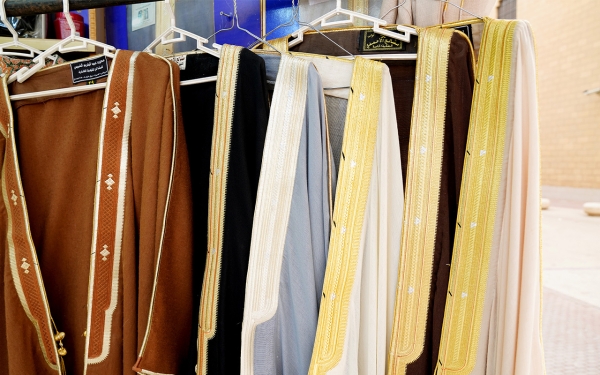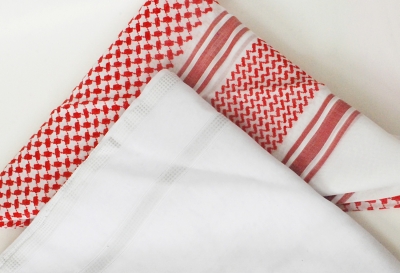
Hasawi Bisht is also known as al-Bisht or al-Mashleh al-Ahsaei. It is a loose traditional robe that is open from the front, and worn by men on public and private occasions in most provinces of the Kingdom of Saudi Arabia. Its weaving and embroidery are two famous traditional crafts in al-Ahsa Governorate, the Eastern Province. They were perfected and inherited by many of the province's families in the past, thus the relation of the name with al-Ahsa. Then, this profession spread to the rest of the provinces and cities of the Kingdom, as well as the Gulf countries.
Al-Mishlah is a traditional clothing in the Kingdom. It is worn by officials, dignitaries, and imams of mosques. It is also worn on special occasions and events, as well as at weddings and festivals.
Types of Hasawi Bisht
Al-Mishlah al-Hassawi is classified according to the type of weaving and embroidery. Some of the types include Mukhawmas, Malaki, Tabuq, Maqta', Mutawase', and Marwuba. It is embroidered using metallic threads called Zari to decorate the edges. Zari comes in different types, such as golden, yellow, silver, red, or white Zari. Al-Bisht is also embroidered with various types of silk threads. It is available in different sizes and shades, ranging from light to dark, according to personal preferences and the atmosphere. Its quality depends on the type of threads and fabric used.
The handicraft of Hasawi Bisht
The high price of al-Mishlah al-Hassawi is due to the accuracy of its handicraft, the quality of its materials, and the skills of its maker. Al-Mishlah al-Hassawi, which is decorated with German Zari, is one of the precious pieces that some families are keen to acquire. Gold Zari, which is imported from India, Germany, or France, is sometimes used in some types of al-Mishlah al-Hassawi.
The manufacture of al-Mishlah goes through seven stages, and takes a period between twelve and fifteen days, and may even reach six months. It begins with fitting, followed by al-Tawk, Buruj, al-Maksar, lacing, khabana, then bardakh, during which the Zari is struck and its color is highlighted. Japanese fabrics are used in its weaving, and it is meticulously sewn with cotton threads.
Weaving al-Mishlah is one of the inherited industries among al-Ahsa families. Al-Ahsa weavers used to teach their children this profession from an early age. With the advent of the automatic industry of al-Mishlah, many weavers made it their hobby, although some families are still manufacturing it manually.
Related quizzes
Related articles


